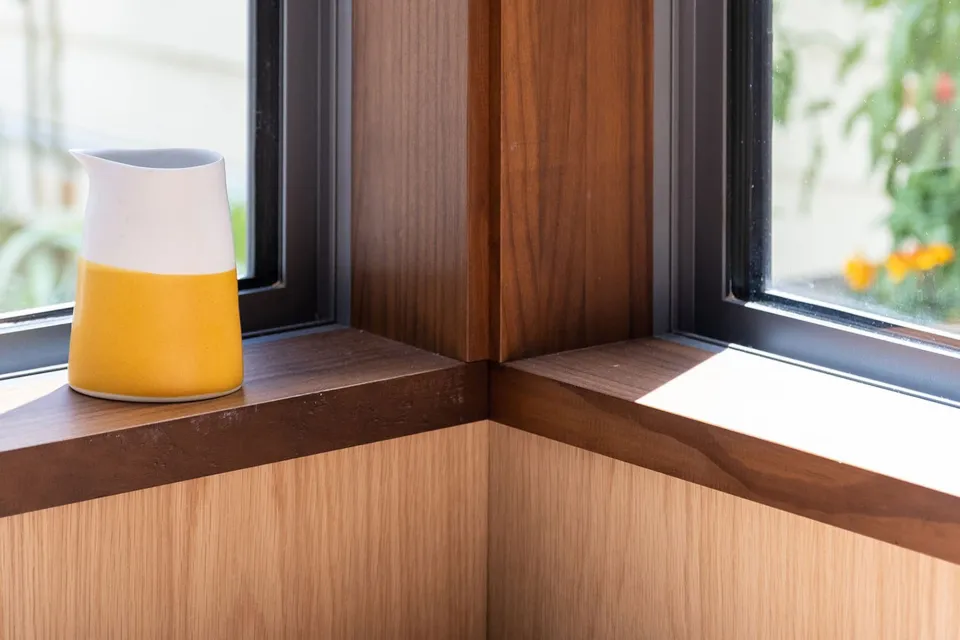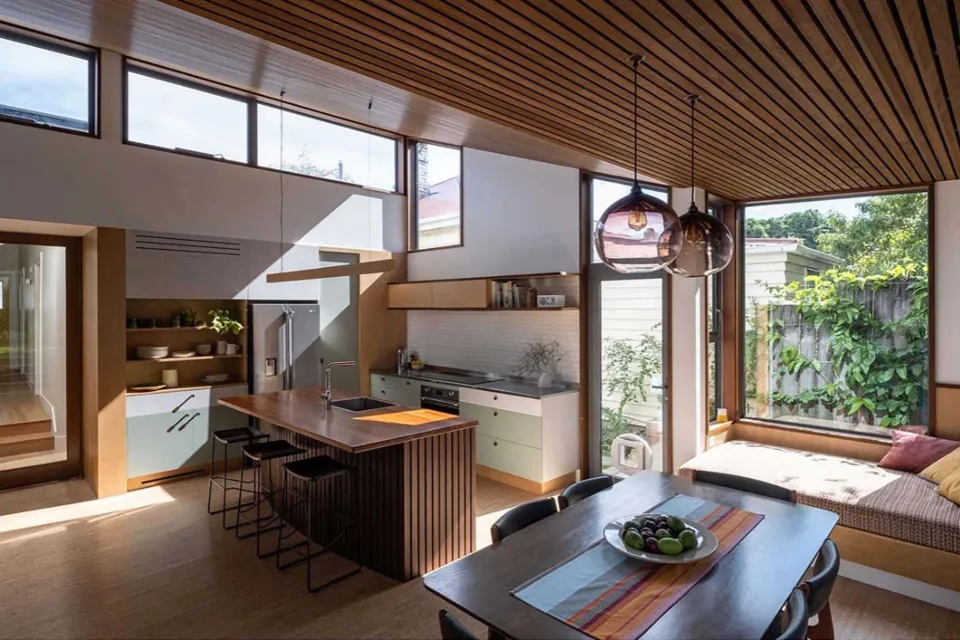-
About
-
Products
- By Timber Product
- Cladding
- Decking
- Screening
- Panelling
- View all
- By Application
- Exterior Cladding / Siding
- Exterior Rain Screen
- Interior Walls & Ceilings
- Soffits
- Screening, Fins & Battens
- Windows, Doors & Joinery
- Posts & Beams
- Accessories
- Coatings
- Fixings
- Samples
-
Resources
- Projects
- Contact
Is Alu-Wood the Answer for Long-Lasting Attractive Window Framing for Harsh Climates?
Alu-wood window frames combine the beauty of wood inside with the longevity of aluminum framing externally.
Offering a best-of-both-worlds solution, this combination may be the answer for our changeable southern hemisphere climate, as this report by scientist Gill Menzies of Heriot Watt University highlights.
Titled ‘Whole Life Analysis of timber, modified timber and aluminium clad timber windows’, the report for the Wood Window Alliance in the UK investigates the environmental impact of different materials by comparing the Service Life Planning (SLP), Whole Life Cost (WLC) and Life Cycle Assessment (LCA) of a standard window in each of the four frame materials, paying attention to the durability and maintenance requirements of each material.
When it comes to wholly timber framed windows, the issue for a building’s WLC can be the need for replacement. While the timber has low embodied carbon and can sometimes be reused when dismantled, it will need to be replaced more frequently than an aluminium frame, especially if it is subject to high solar hours, rainfall levels and variable temperatures such as those experienced in many areas of New Zealand and Australia.
As a comparison, PVC-U window frames come out as both the most expensive option and the least sustainable in terms of LCA data, as they are difficult to recycle and last around half the number of years of the other options.
A more durable option is the hybrid Alu-wood, which places sleek, hardy aluminium framing to the exterior face of the building, while inside the warmth of timber framing and sills can be enjoyed. This allows for the window frame to be protected from the outdoor environment while still maintaining the natural aesthetic and insulating benefits of timber framing. As the report points out, this option provides excellent longevity, which in turn means that the alu-clad timber frame also comes out at the lowest price in the WLC analysis.
This data is inspiring for builders and specifiers looking for both sustainable and lasting solutions for their projects.
The analysis shows that, where weather stress is an issue, or maintenance is constrained, modified timber or Aluminium-clad timber may be optimal.


